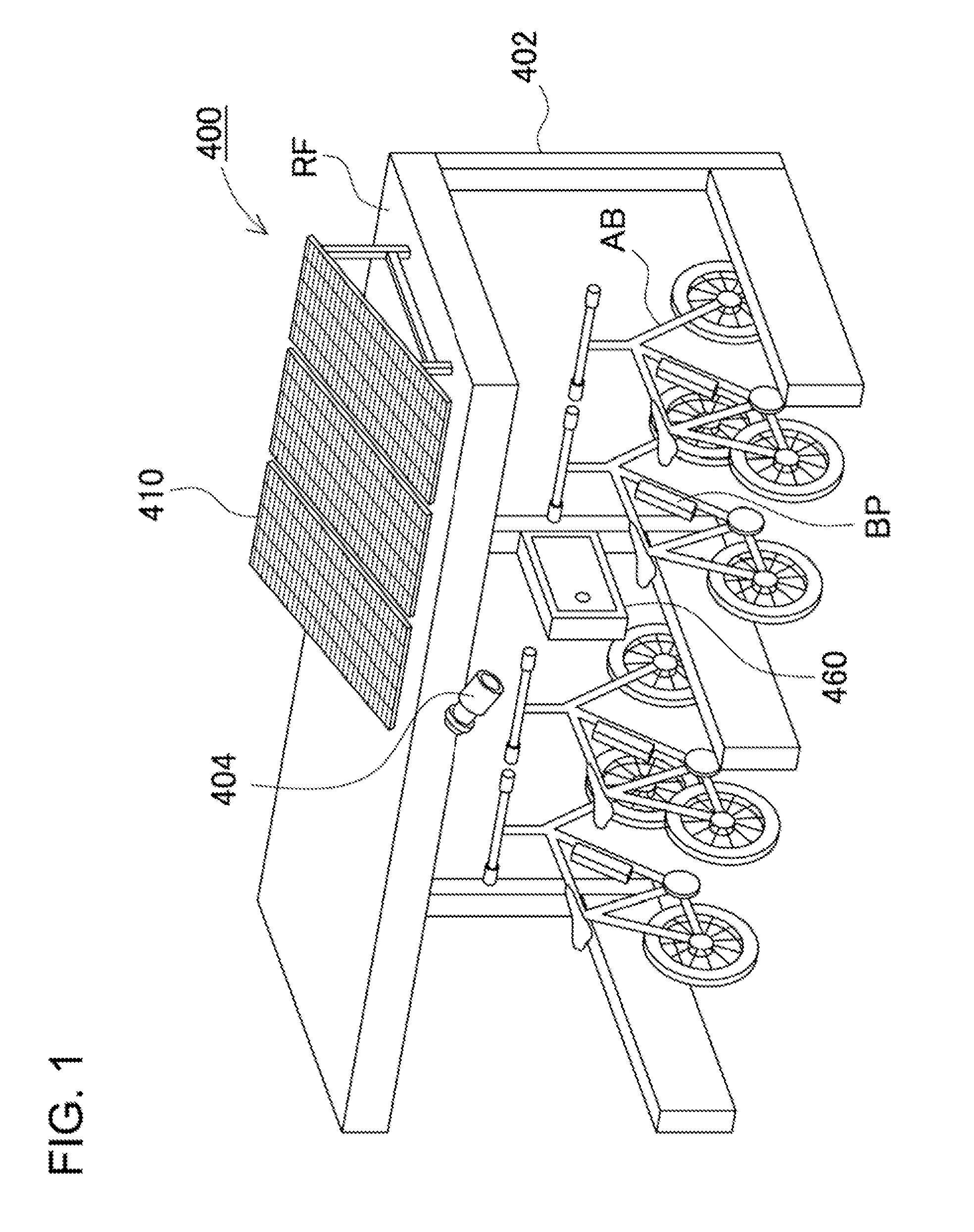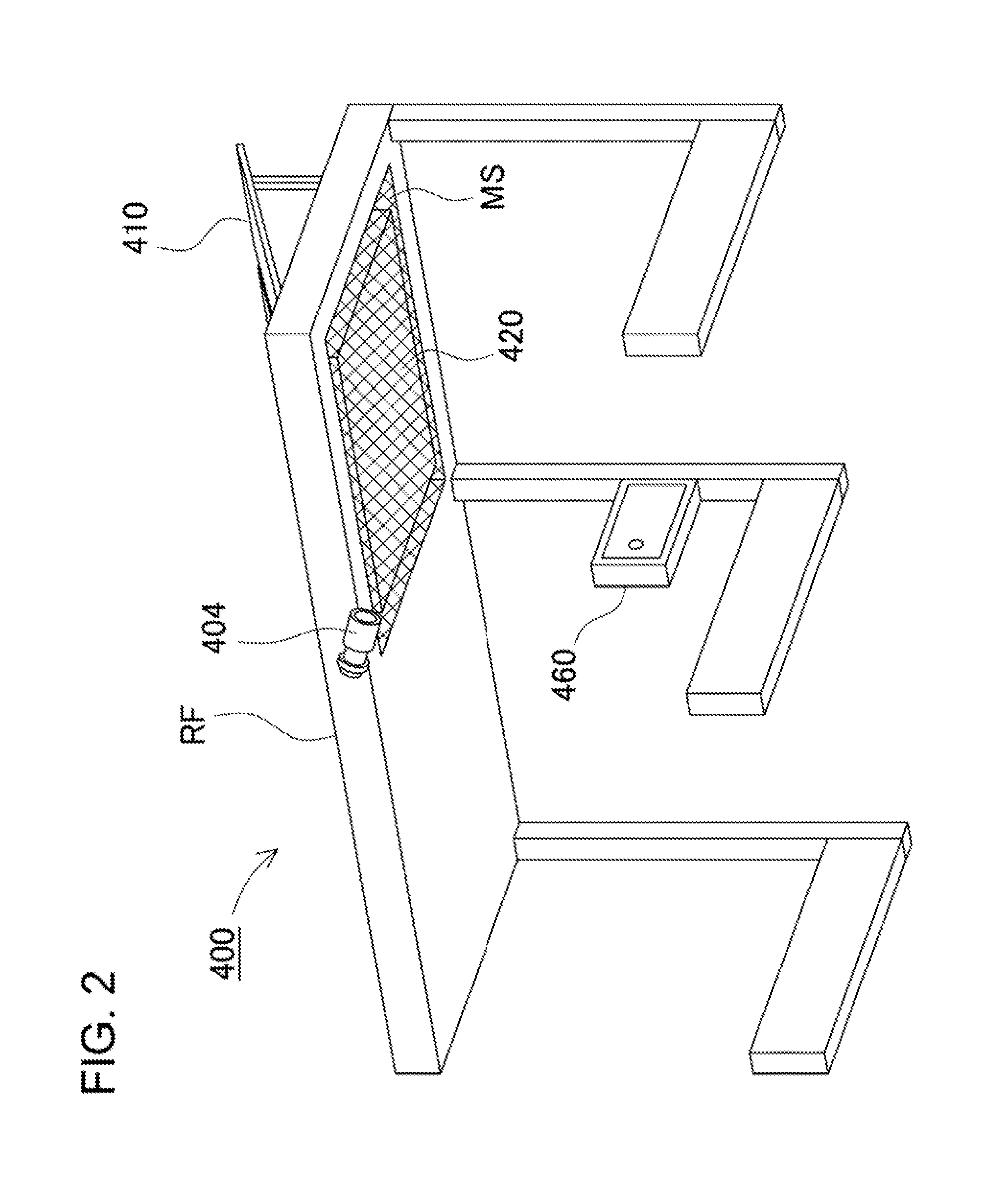Solar cell power supply device and rechargeable battery solar charging method
a solar charging and solar cell technology, applied in the direction of electrochemical generators, secondary cell servicing/maintenance, transportation and packaging, etc., can solve the problems of difficult to accurately charge rechargeable batteries into the fully-charged state, difficult for solar batteries to constantly generate stable electric power, and large variation with each passing minute, etc., to eliminate or reduce improper detection of the fully-charged state, the effect of efficient discharg
- Summary
- Abstract
- Description
- Claims
- Application Information
AI Technical Summary
Benefits of technology
Problems solved by technology
Method used
Image
Examples
embodiment 1
[0061]A solar battery power supply device 400 according to an embodiment 1 of the present invention will be described with reference to FIGS. 1 to 20. FIG. 1 is a schematic view illustratively showing the solar battery power supply device applied to charging equipment in a bike shed. FIG. 2 is a schematic view showing a roof of the bike shed as viewed from the lower side. FIG. 3 is a block diagram showing the construction of the solar battery power supply device shown in FIG. 1. FIG. 4 is a schematic view showing the front of a console. FIG. 5 is a perspective view showing the outward appearance of a battery box as viewed from the upper side. FIG. 6 is a perspective view showing the battery box shown in FIG. 5 as viewed from the lower surface side. FIG. 7 is an exploded perspective view showing the battery box shown in FIG. 5 with an upper case being removed. FIG. 8 is a cross-sectional view of the battery box shown in FIG. 5 taken along the line VIII-VIII. FIG. 9 is an exploded per...
embodiment 2
[0118]Although the solar battery power supply device 400 has illustratively been described that adds battery pack charging function to the bike shed in the foregoing embodiment 1, the load to be connected to the solar battery power supply device is not limited to this. Various types of electric devices can be connected to the solar battery power supply device. The following description will describe a solar battery power supply device 100 according to an embodiment 2 that drives a street light as load with reference to FIGS. 21 to 31. FIG. 21 is a perspective view showing the outward appearance of the solar battery power supply device as viewed from the front side. FIG. 22 is a perspective view showing the outward appearance of the solar battery power supply device as viewed from the front side. FIG. 23 is a perspective view showing the solar battery power supply device shown in FIG. 22 with a battery cover being removed whereby exposing a battery box. FIG. 24 is a perspective view ...
PUM
 Login to View More
Login to View More Abstract
Description
Claims
Application Information
 Login to View More
Login to View More - R&D
- Intellectual Property
- Life Sciences
- Materials
- Tech Scout
- Unparalleled Data Quality
- Higher Quality Content
- 60% Fewer Hallucinations
Browse by: Latest US Patents, China's latest patents, Technical Efficacy Thesaurus, Application Domain, Technology Topic, Popular Technical Reports.
© 2025 PatSnap. All rights reserved.Legal|Privacy policy|Modern Slavery Act Transparency Statement|Sitemap|About US| Contact US: help@patsnap.com



